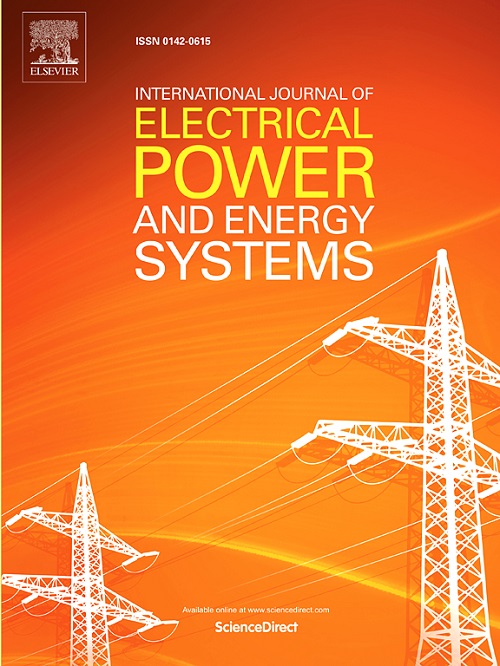电力和天然气综合系统的水合物约束最优潮流
IF 5
2区 工程技术
Q1 ENGINEERING, ELECTRICAL & ELECTRONIC
International Journal of Electrical Power & Energy Systems
Pub Date : 2025-09-27
DOI:10.1016/j.ijepes.2025.111178
引用次数: 0
摘要
电、气一体化系统作为能源转型中的一种过渡方案,可以显著提高能源供应的安全性和利用效率。然而,作为一种能量载体,电能的物理性质与天然气有很大的不同。在天然气输送过程中,气体流动可能会形成固体水合物,阻塞管道,使制定的作业策略失效。根本问题在于没有将输气系统中水合物引起的管道堵塞纳入电、气一体化系统的优化运行框架中。为此,本文提出了防止天然气水合物形成的电、气一体化系统的最优能量流模型。首先,根据水合物形成临界状态下气体压力与气体温度的映射关系,构建水合物形成约束,并分析该约束对集成系统内各部件操作域的影响;在此基础上,提出了一种新的水电约束下电力天然气综合系统最优能量流模型。同时,将模型中难以处理的参数指数约束转化为线性函数,降低了优化问题的计算复杂度。数值结果表明,该方法有效地防止了不同操作场景下天然气水合物的形成,同时保证了集成系统中最优能量流策略的可靠实施。本文章由计算机程序翻译,如有差异,请以英文原文为准。
Hydrate-Constrained Optimal Power Flow for Integrated Electricity and Natural Gas Systems
As a transitional scheme in the energy transition, the integrated electricity and natural gas systems can significantly enhance energy supply security and utilization efficiency. However, as an energy carrier, the physical properties of electric energy are quite different from those of natural gas. During the natural gas transmission process, gaseous flows may form solid hydrates, blocking pipelines and rendering formulated operational strategies ineffective. The fundamental problem lies in the failure to incorporate hydrate-induced pipeline blockages in gas transmission systems into the optimal operation framework of integrated electricity and natural gas systems. Therefore, this paper proposes an optimal energy flow model for integrated electricity and natural gas systems designed to prevent natural gas hydrate formation. Firstly, according to the mapping relationship between gas pressure and gas temperature in the critical state of hydrate formation, the hydrate formation constraint is constructed, and the influence of this constraint on the operation domain of components is analyzed within the integrated system. On this basis, a novel model is proposed that the hydrate-constrained optimal energy flow for integrated electricity and natural gas systems. Simultaneously, the intractable parametric exponential constraints in the model are reformulated into linear functions to reduce the computational complexity of the optimization problem. Numerical results demonstrate that the proposed methodology effectively prevents natural gas hydrate formation across diverse operational scenarios while ensuring the reliable implementation of optimal energy flow strategies in integrated systems.
求助全文
通过发布文献求助,成功后即可免费获取论文全文。
去求助
来源期刊
CiteScore
12.10
自引率
17.30%
发文量
1022
审稿时长
51 days
期刊介绍:
The journal covers theoretical developments in electrical power and energy systems and their applications. The coverage embraces: generation and network planning; reliability; long and short term operation; expert systems; neural networks; object oriented systems; system control centres; database and information systems; stock and parameter estimation; system security and adequacy; network theory, modelling and computation; small and large system dynamics; dynamic model identification; on-line control including load and switching control; protection; distribution systems; energy economics; impact of non-conventional systems; and man-machine interfaces.
As well as original research papers, the journal publishes short contributions, book reviews and conference reports. All papers are peer-reviewed by at least two referees.

 求助内容:
求助内容: 应助结果提醒方式:
应助结果提醒方式:


